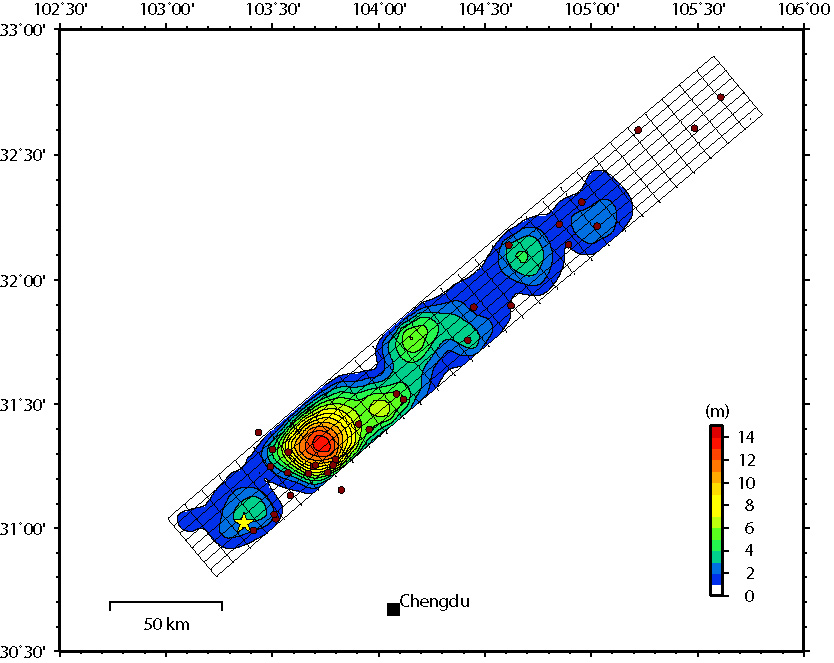| Earthquake Research Institute, Univ. of Tokyo
The 2008 Sichuan Earthquake (preliminary finite fault model) |
|---|
[Update 2008.05.16]
This is a preliminary finite fault model for the Sichuan earthquake.
This earthquake has a strike direction of NE-SW (strike; 230deg), and focal type is reverse fault (dip; 32 deg) with some strike slip components.We analyzed the first 150 sec of 40 P and 8 SH teleseicmic waves downloaded from IRIS, using Kikuchi & Kanamori [1991] and Yoshida et al., [1996] for the calculation of Green function and for the inverse algorithm, respectively. We use the hypocenter of the USGS (Longitude=103.30 degree, Latitude=31.10 degree). The depth is fixed to 11 km.
Finite fault parameters:
Strike: 230 degree, Dip : 32 degree (dipping to the NW),
Seismic Moment=1.02e21 Nm, Mw(Moment magnitude) 7.9, Maxmum slip: 13 m
The figure below shows the cross-section of slip distribution. The slip amplitude is shown in color scale and slip direction of the hanging wall relative to the footwall is indicated by the arrows. The hypocenter is indicated by the yellow star. The largest slip occurred at 40 to 60 km north from the hypocenter, and some more asperities (i.e. local maxima of slip)can be also seen. The length and width of the fault are presumed to be 230 km and 40 km, respectively, according to the slip distribution. (For the analyses, we assumed 320 km and 40 km from the aftershock distribution.) The duration time (i.e. time to complete the rupture on the fault) is estimated to be 100 to 120 sec.
Slip distribution on the fault
The figure below shows surface projection of the slip distribution on to the surface. Red circles indicate the locations of aftershocks.
Surface projection of the slip distribution
Click bellow for the comparison of teleseismic body waves.
Comparison of the data and synthetic seismograms

